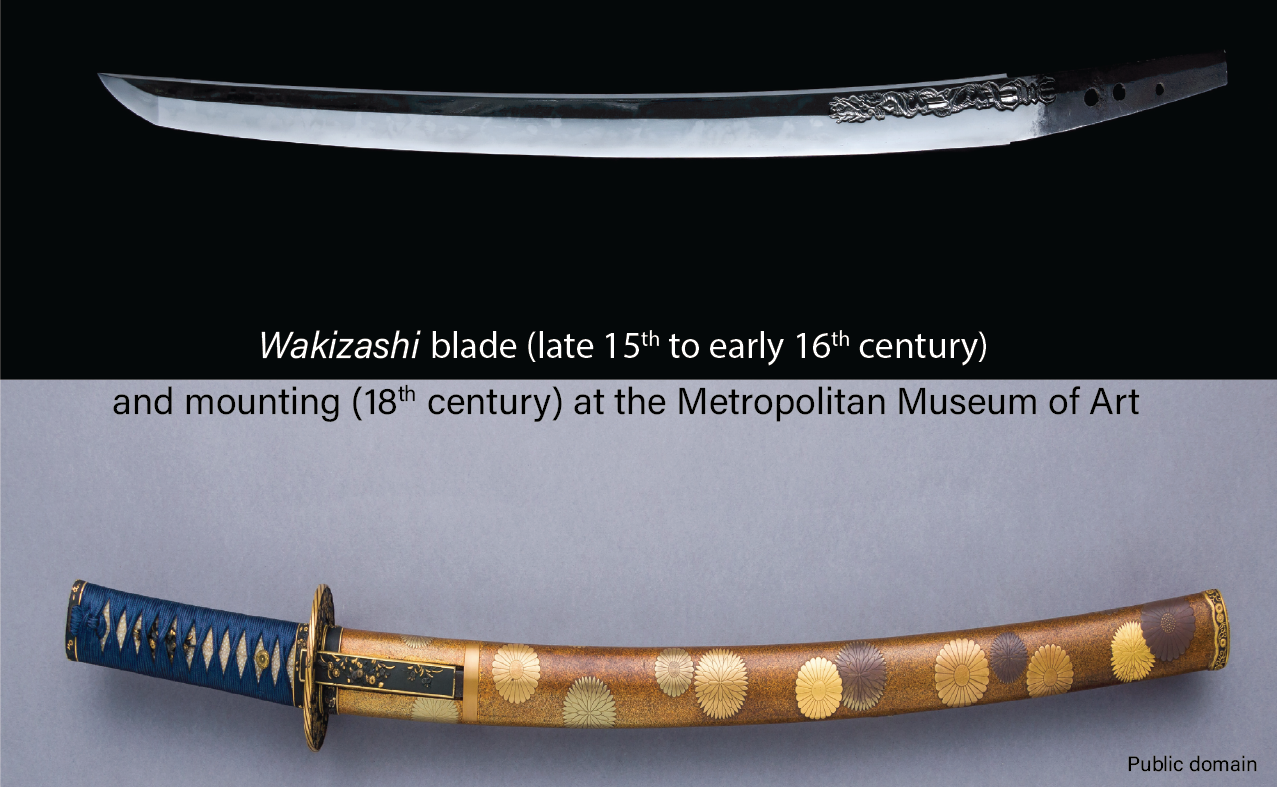Japanese Sword Found in the San Diego Shipwreck | National Museum of the Philippines
 |
| Poster by Ligaya Lacsina (MUCHD) |
Let's look at evidence suggesting the presence of Japanese soldiers aboard the galleon San Diego. As discussed in previous posts [The Martaban Jars From The San Diego Shipwreck] , San Diego sunk in battle against the Dutch ship Mauritius in 1600. Finds from the shipwreck, which was archaeologically excavated in 1992 and 1993 by World Wide First (WWF) and the #NationalMuseumPH, include several tsuba, or sword hand guards, as well as a large fragment of a heavily encrusted sword exhibiting the typical curvature of a nihonto, or Japanese sword.
 |
| The blade of this wakizashi (short sword), on exhibit at the Metropolitan Museum of Art, dates to the same time period as the San Diego shipwreck. |
There are a number of different swords that gained popularity throughout Japan’s history. From around the 15th century CE, the use of the katana became widespread. It is a single-edged longsword with a blade typically longer than 60 cm.
 |
| A daisho is a pairing of one long sword and one short sword required to be carried by samurai. This daisho is composed of a katana and wakizashi, on exhibit at the Los Angeles County Museum of Art. |
The class of Japanese military nobility known as samurai were required to pair the long sword with a short sword, usually a wakizashi, with a blade length between 30 and 60 cm, or a tanto, whose blade is typically less than 30 cm. It is difficult to determine whether the encrusted sword fragment from San Diego is a katana or wakizashi.
The tsuba from San Diego are made from plate metal, mostly copper alloys, and exhibit various intricate designs and shapes. They are positioned between the sword’s handle and blade and protect the user’s hands.
 |
| Selected parts of a Japanese sword. |
It may seem peculiar that evidence of Japanese weaponry was found in the wreckage of a Spanish galleon in the Philippines.
 |
| An armored samurai pictured with his daisho, 1860s. |
But by the end of the 16th century CE, a Japanese community numbering between 1,000 to 1,500 lived in Dilao, now Paco, outside of the walled city and close to the Chinese Parian in Manila. They were largely Christian exiles and refugees escaping religious persecution in Japan. Spanish colonial period texts inform us that men who were once part of the samurai class were hired as mercenaries in the city and aboard ships. The archaeological evidence from this shipwreck aids in classifying this aspect of our past.
Our heritage and recounting its narrative through material culture benefits future generations and our aspirations as a nation. If you see or have knowledge of sites being looted, report to your local government authorities immediately or contact the closest NMP office near you.
These objects are currently held at the National Museum of Anthropology.
___________
Text and poster by Ligaya Lacsina (MUCHD)
Images © Frederic Osada, Gilbert Fournier, Franck Goddio/World Wide First (WWF); NMP-MUCHD


No comments:
Got Something to Say? Thoughts? Additional Information?